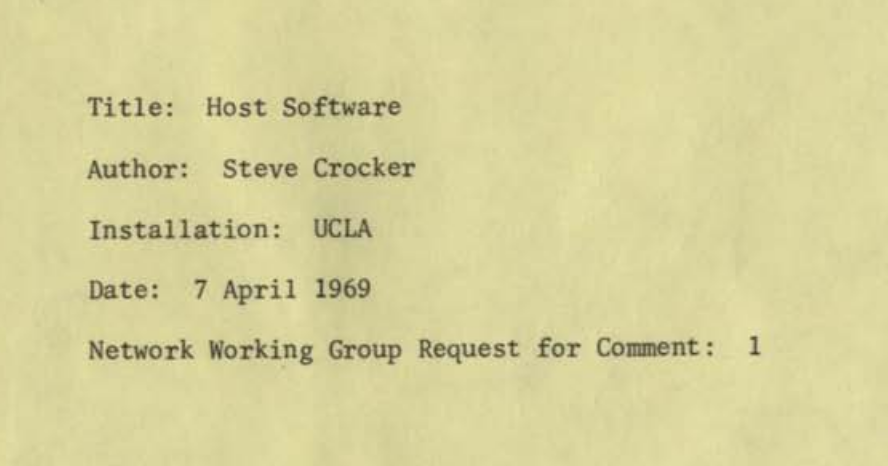RFC-76
by Darius Kazemi, March 17 2019
In 2019 I'm reading one RFC a day in chronological order starting from the very first one. More on this project here. There is a table of contents for all my RFC posts.
A new kind of Host
RFC-76 is called “Connection-By-Name: User-Oriented Protocol”, dated October 28th, 1970. It's authored by W. Jack Bouknight, James Madden, and Gary Grossman of the University of Illinois.
The technical content
The plan is for the University to connect to the ARPANET beginning January 1st, 1971, a little more than two months' time from the publication of this document.
This RFC describes a new kind of node on the ARPANET: a computer whose sole job is to broker with the ARPANET. This would be an extension to the current Host-Host protocol.
The basic idea is that all the actual computing is designed to happen on other computers on the internal network at the university. Their reasoning is that typical computer users at the school understand computers on the file and device level, but sockets and links and protocol stuff is totally foreign to them. They want to abstract away all of this and not even have the NCP be exposed to the user at all.
The paper talks about these protocol extensions, and also specs out what the interface computer might look like (a relatively low-power PDP-11) and how users would interact with it.
Analysis
This overall idea is really interesting: why take up resources on a computer with an NCP program constantly running when you can just offload that part to a computer on the network? It makes total sense to me.
Further reading
W. Jack Bouknight wrote a seminal paper, An algorithm for producing half-tone computer graphics presentations with shadows and movable light sources, which was published in the 1970 SJCC conference proceedings. I have mentioned those here before because they were where the first Host-Host protocol papers were published. In fact, Bouknight's paper is the very first one in the massive 700+ page conference proceedings. It's a really fun graphics paper, or at least it is if you are the kind of person who reads this blog.
I couldn't find much on Gary Grossman but he seems to have been involved with a lot of early computer music, helping Herbert Brün with a PDP-11/45 based music project in 1976.
I could find even less on James Madden, though he would co-author two more RFCs and remained on the distribution list for the Network Working Group until at least 1971.
How to follow this blog
You can subscribe to this blog's RSS feed or if you're on a federated ActivityPub social network like Mastodon or Pleroma you can search for the user “@365-rfcs@write.as” and follow it there.
About me
I'm Darius Kazemi. I'm a Mozilla Fellow and I do a lot of work on the decentralized web with both ActivityPub and the Dat Project.
